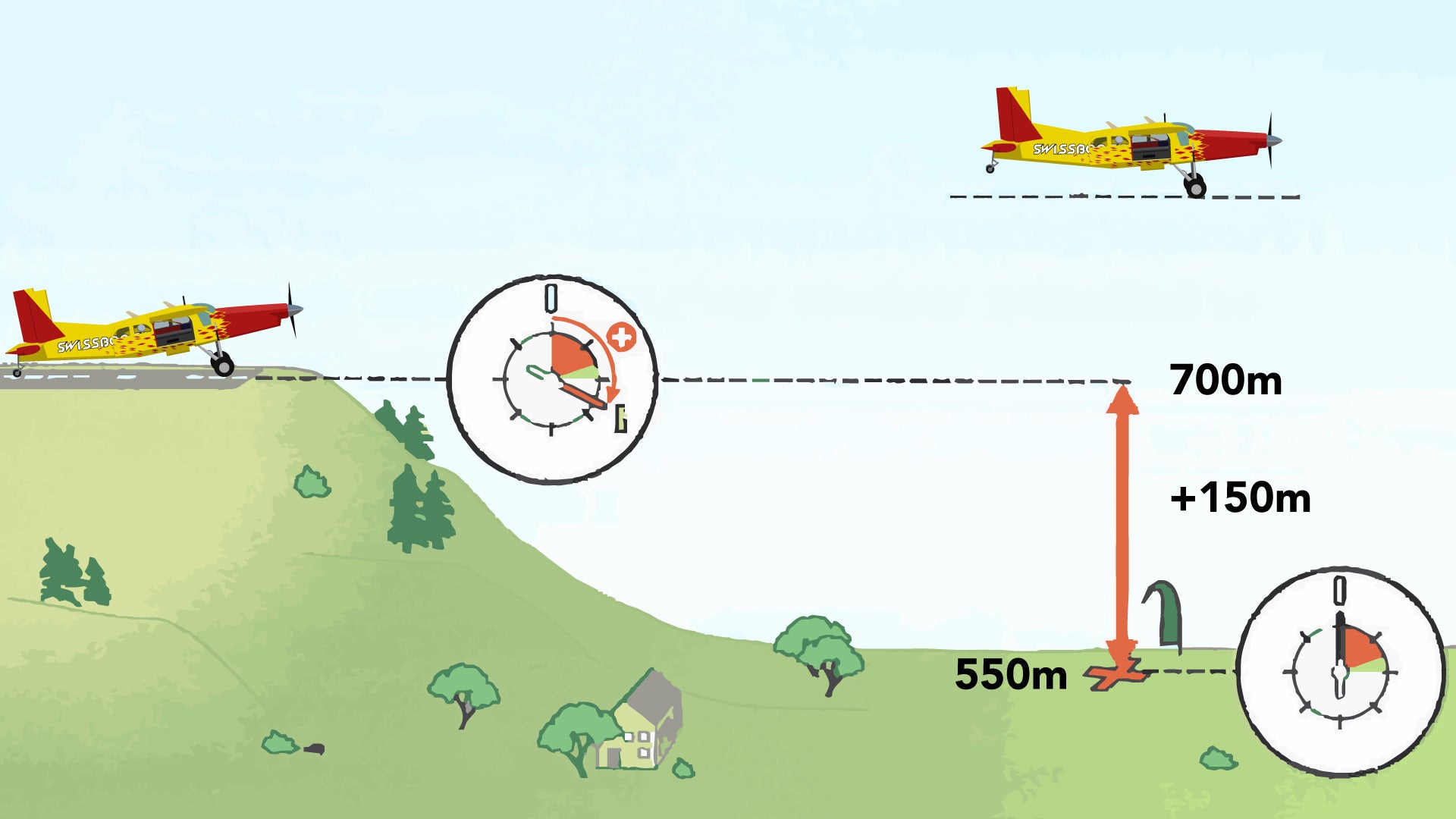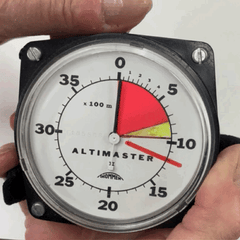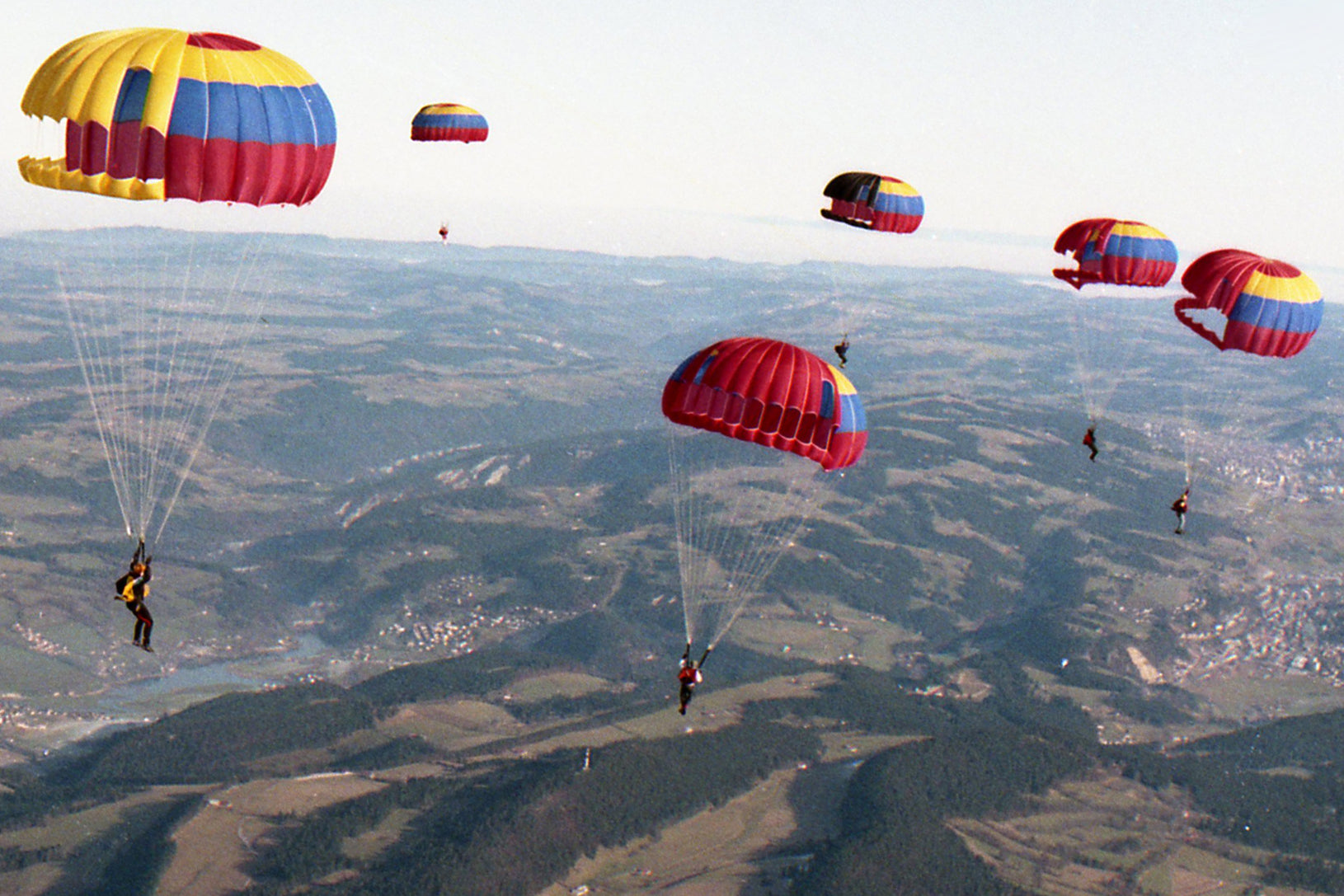
Altimeter and parachute jump
When skydiving, whether it is a jump for fun, a training jump, a competition jump or any other type of jump, the skydiver must always know what altitude he is at.
Indeed, it is important information which allows him: to know how much time he has left to practice his free fall, to know the moment when he will have to separate from the group to open his parachute, then to correctly carry out the flight under canopy and the approach volley.
Most of the time a parachute jump is done on an airfield, that is to say with a takeoff and landing at the same place. In this situation, it is quite easy to adjust these different altitude measuring devices, because we will set them all to 0. Indeed, as we are located directly at the landing altitude we can set the altimeter to altitude 0.
So what should you do when a parachutist jumps somewhere other than the takeoff location?
Less adjustment
Additional adjustment
Indeed it will be extremely rare to find a landing zone at exactly the same height as the takeoff altitude. This will require a little more preparation.
First of all, it is important to know our two main altitudes: that of takeoff and that of landing. Finally, by knowing the difference between these two altitudes, this allows us to adjust our altimeter properly.
Two cases are then possible:
1) The landing zone is higher than the takeoff location
Let's take an example: the takeoff zone is at 500 meters/sea and the landing zone is at 600 meters/sea.
In this situation, the parachutist will be 100 meters lower than the landing zone. So he will have to set his various devices to -100 meters. Indeed, when he takes off with the plane, it will first be lower than the landing zone. When his altimeter reads 0 meters, he will be exactly at the height of his landing zone.

2) The landing zone is lower than the takeoff location
Let's take an example: the takeoff zone is at 700 meters/sea and the landing zone is at 550 meters/sea.
In this situation the parachutist will already be 150 meters higher than the landing zone. So, he will have to set his devices to +150 meters. In fact, before even getting on the plane it will already be 150 meters higher than the landing zone.

In both cases, if the parachutist makes his calculations and adjustments correctly, he will land in the landing zone with an altimeter indicating exactly 0 meters of altitude, as if he had jumped on his dropzone!
Of course it is not only necessary to make this adjustment on the altimeters, but also on the automatic emergency openers (such as for example: Cypres ). To do this, we redirect you to the manufacturers' websites which provide you with documents to make these settings correctly.
Never forget to make these adjustments and calculations before each jump which takes place on a landing zone different from the take-off zone. This is important for your safety and that of others. Of course, this article does not constitute a reference and when jumping into the countryside, it is more judicious to go to the instructor in charge who will make all the necessary adjustments for you, all this while explaining them to you of course!




1 comment
Perfekter Bericht
Remo Casati
Leave a comment
This site is protected by hCaptcha and the hCaptcha Privacy Policy and Terms of Service apply.